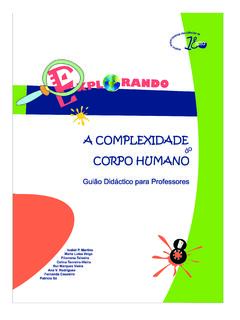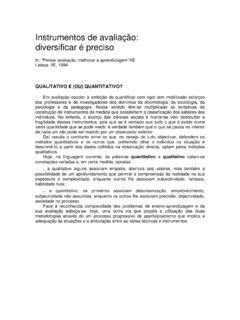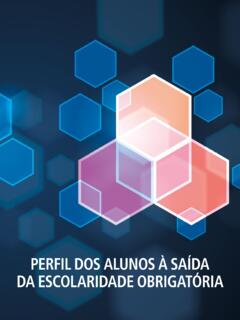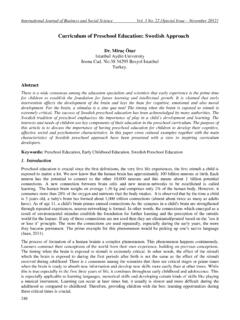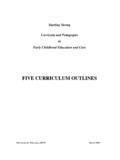Transcription of CURRICULUM IN FINLAND
1 For learning and competence For learning and competence CURRICULUM IN FINLAND Mr Jorma Kauppinen, Director Finnish National Board of education Torres Vedras 14 th March 2016 Lisboa 15th March 2016 For learning and competence FINLAND at glance Independent since 1917, member of the European Union since 1995 - Total area 338,000 km2, Population million (17 inhabitants / km2) - Two official languages: Finnish 92 %, Swedish 6 %, (Saami 0,03%) - Religion: Lutheran (84 %), orthodox (1 %) -74,6 % of population (aged 25 to 64) have completed upper secondary or tertiary education . 33,2 % have university or other tertiary qualifications -Immigrants: 2 % of population -Main exports: electronics, metal and engineering, forest industry -Working life: 86 % of women (aged 25 to 64) are employed outside the home.
2 Average monthly income (men) 2832 and (women) 2273 euros. For learning and competence ADMINISTRATION AND FUNDING OF education education is the responsibility of the Ministry of education and Culture The Finnish National Board of education (FNBE) works with the Ministry of education to develop educational aims, content and methods for primary, secondary and adult education Local administration is the responsibility of the local authorities (municipalities) which play a prominent role as education providers Most institutions providing basic and upper secondary level education are maintained by local authorities or joint municipal boards For learning and competence education providers have a central role in the governance structure Parliament Government Ministry of education and Culture National Board of education (FNBE) education providers Municipalities (336), Federations of municipalities, private organizations Schools and other educational institutes (2900 in basic education ) State regional organizations (5)
3 For learning and competence FINNISH NATIONAL BOARD OF education The Finnish National Board of education is the agency responsible for the development of education and training in FINLAND , working under the auspices of the Ministry of education . It is responsible for developing early childhood education and care, pre-primary and basic education , morning and afternoon activities for schoolchildren, general upper secondary education , vocational upper secondary education and training, adult education and training, liberal adult education and basic education in the arts. FNBE was established in 1991 background since 1869 For learning and competence FNBE: DEVELOPING education draws up National Core Curricula for early childhood education and care, pre-primary education , basic education , general upper secondary education and upper secondary vocational qualifications and the Requirements of Competence-based Qualifications these documents determine the core objectives, contents and guidelines for teaching.
4 education providers prepare their own local curricula based on these national documents steers implementation of curricula and explores reform needs. It undertakes various projects to develop education . For learning and competence EARLY CHILDHOOD education AND CARE For learning and competence Short History of the Present education System Comprehensive School Reform 1970-1977 and birth of the present Upper Secondary System 1975 parallel school system was replaced by nine-year compulsory comprehensive education > same basic education for all , non-graded general upper secondary education and high quality vocational education were also developed later in 70 s and 80 s preschool education for 6-year olds became a subjective right for all children 2001 National Core CURRICULUM for Basic education has been renewed in 1985, 1994.
5 2004 and 2014 Through these years: growing municipal autonomy and empowerment of schools and teachers For learning and competence The Ethos of the Finnish education system Professionalism of teachers Empowerment of teaching profession High quality of teacher education Supportive ethos Early intervention Individual approach Active role of students Good student-teacher relationships Encouraging feedback Learning culture education system: comprehensive, non-selective, central guidelines and goals, local implementation and innovation High standards for all Enabling, encouraging, Ethos of trust For learning and competence General education reform.
6 CURRICULUM development 2012 2017 2012 2013 2014 2015 2016 2017 NCC for pre-primary, basic and voluntary additional basic education NCC for general upper secondary education NCC for basic education for adults and NCC for general upper secondary education for adults NCC for basic education in the arts Local curricula Local curricula Local curricula Local curricula NCC Preparatory education for general upper secondary school Local curricula NCC = National Core CURRICULUM For learning and competence National Core CURRICULUM 2014 Government Decree 422/2012 governing the general national objectives and distribution of lesson hours in basic education Basic education Act and Decree Local needs and policies LOCAL CURRICULUM MUNICIPAL
7 LEVEL POSSIBLE SCHOOL-SPECIFIC CURRICULUM Quality criteria For learning and competence Teaching and learning are on the top in FINLAND All parts of the system aim at supporting teaching and learning national norms form a strong basis for local provision of education Quality is based on national standards given in education Acts and Decrees, National Core Curricula, and in national teacher qualification criteria, on financial guidance, and on internal (self) evaluation and external evaluation. Vertical and horizontal interaction and cooperation are the means for creating common understanding, and also for getting information for the new development processes CURRICULUM has a central role in the system, both as the means of interaction and as the basis for evaluation and pupil assessment For learning and competence CURRICULUM as an interactive and strategically important process Three layers of CURRICULUM .
8 National core CURRICULUM , municipal CURRICULUM , school CURRICULUM and year plan All these are created in an open, extensive and interactive process CURRICULUM is more a process than a product CURRICULUM is a strategic document and it reflects our best understanding of humanity, society and learning; it also connects the work of every school to municipal and national strategies National quality criteria for basic education support the conceptualization of the core CURRICULUM at the local level For learning and competence Qualities of CURRICULUM CURRICULUM is the expression of our insight and will and it gives common direction to the processes and development of teaching and learning CURRICULUM is holistic and compact it covers all areas of learning and school life.
9 Not only different subjects Goals for learning and prerequisites for successful learning process are more important than subject contents CURRICULUM is inclusive it covers education for all students CURRICULUM looks for the balance between academic achievement and student welfare CURRICULUM is based on future orientation and competence-based thinking For learning and competence Why is reform needed? The world surrounding school has changed essentially since the beginning of the 21st century the effects of globalisation and the challenges of a sustainable future Competencies required in society and working life have changed skills to build a sustainable future It is necessary to examine educational contents, pedagogy and schools working practices and reform these in relation to changes in the operating environment and competencies.
10 For learning and competence Focus of the CURRICULUM reform Rethinking the learning conception Importance of students own experiences and activities, feelings and joy Importance of working together, learning to learn in dialogue with others Renewing the idea of learning environment Rethinking the school culture and the relationship between the school and the community School as a learning community Diverse and open cooperation Rethinking the roles, goals and content of school subjects Transversal competences to support the identity development and the ability to live in a sustainable way 16 For learning and competence Why? What? How? Core of the reform 17 The school will be developed both as a growth community and as a learning environment For learning and competence The ground of the CURRICULUM reform in basic education Transforming from WHAT to learn to HOW to learn Pedagogical reform Broad competences, school culture, connections and collaboration between subjects Building integrity of basic education Renewal of pedagogical thinking, learning environments.

